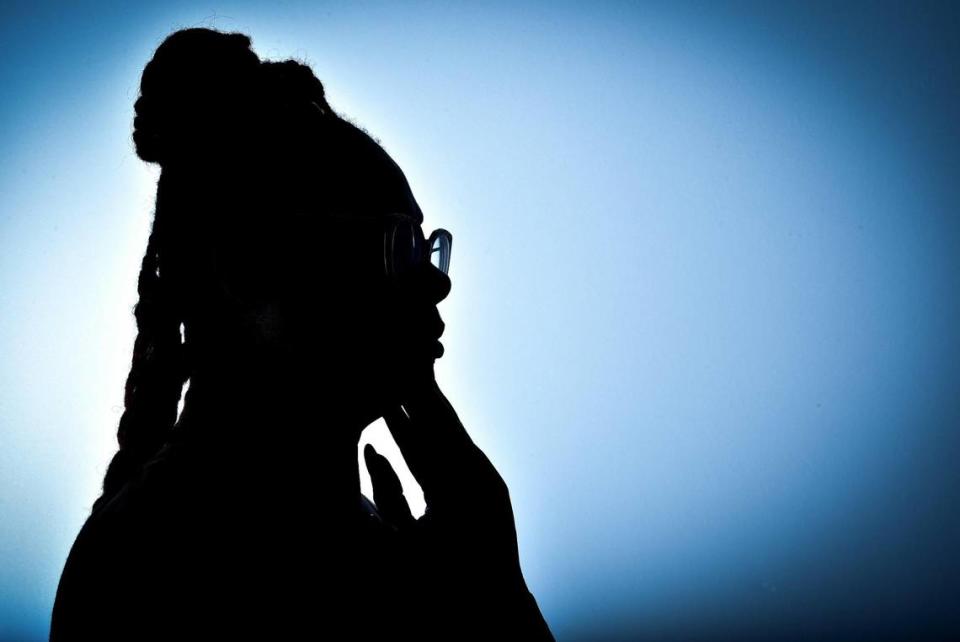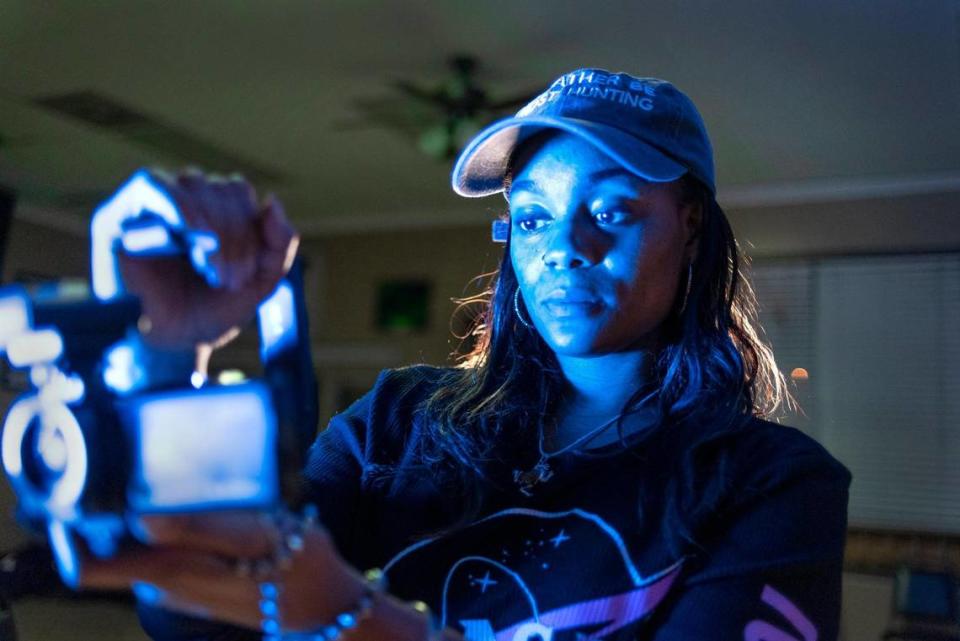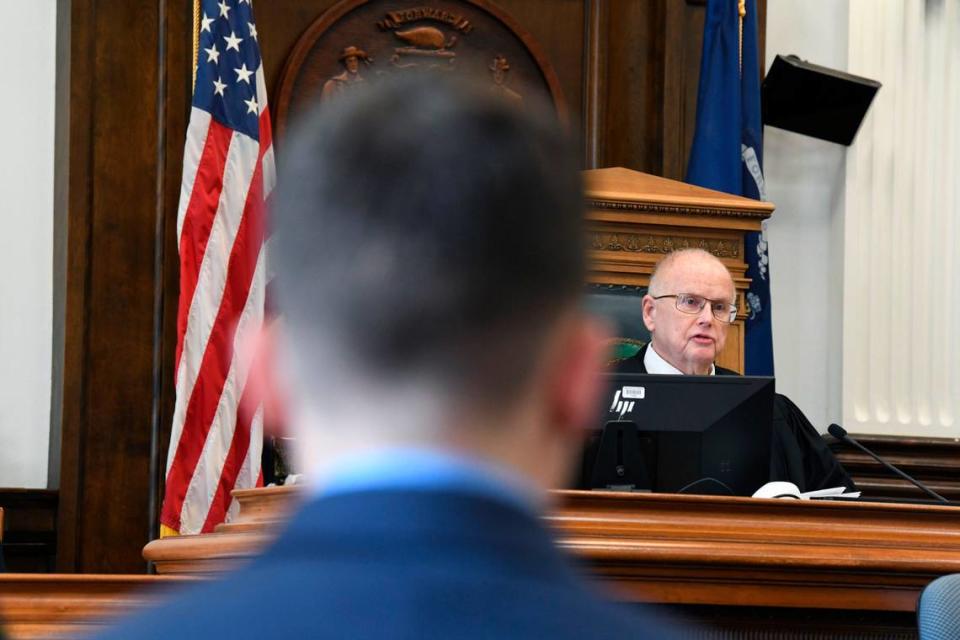On The Vine: Allow me to reintroduce some folks

Yo, we’ve been busy.
The Star’s been in the lab, recruiting new journalists, and I for one think we’ve done a hell of a job.
You met Allison last week and she talked about her service desk team, which is first and foremost and importantly here for you Kansas City, to answer your questions and help you better understand day-to-day life in this city that has seen a lot (still not enough) change, but with so much potential.
Including Allison’s team, we’ve hired 11 new journalists in recent months. They span all different backgrounds, points of view and come from as near as can get and far. This is all important. Having voices and perspectives in our newsroom that differ, add, and present a whole new view and experience of the world.
What I’m most excited about though: The number of young journalists now at The Star.
We have to be able and willing to invest in the future of journalism and supporting those new voices and perspectives, which are so important to the growth and change and success of our business. And when journalism is successful, hearts and minds and policy change.
Gah, it makes me giddy.
So, welcome Aarón Torres, Matti Lee Gellman, J.M. Banks, Lila Bromberg, Emily Curiel, Dan Desrochers, Allison Dikanovic, Joseph Hernandez, David Hudnall, Ed Timms, Natalie Wallington.
Read more about them: The Star hires 11 new journalists as it expands coverage of Kansas City
Around the block

She’s not the first to accuse this former KCK cop. But she had a rape kit done the next day
The Star’s Melinda Henneberger, opinion editor and columnist, has for years reported on accusations against former Kansas City, Kansas, police detective Roger Golubski.
She has spoken with alleged victims of Golubski and their families, and reported on decades of misconduct, abuse and manipulation. And The Star has detailed the former detective’s connection to several slain Black women in KCK.
Earlier this month, news of a federal grand jury investigation into Golubski broke. And now, Henneberger reports on the first woman to have gone to the hospital after encountering Golubski and have a full rape kit done.
She’s 54 now, and is prepared to testify. She is planning to call the FBI on Monday, so agents won’t even have to look for her.
Golubski is accused of exploiting and raping mostly poor Black women, whose male companions and relatives he abused differently, threatening arrest and worse, throughout his 35-year career at the KCKPD.
A lot of time has passed since that 1990 hospital visit, of course. Law enforcement agencies across the country have been found to have violated their own policies by destroying rape kits, in some cases within months of receiving them, without ever testing them.
But if that kit has been preserved, then the years of official amnesia and what certainly looked like foot-dragging to the Golubski victims who talked to federal agents years ago, and never heard from them again, are finally coming to an end.
Be sure to check out...
Kansas City high school teacher on leave after students report comments made in class
For 17 minutes, Belton police made every Black man in Cass County a shooting suspect
Wesley Hamilton, of Disabled But Not Really, gets $1 million for Kansas City nonprofit
As winter approaches, city leaders in KC set to discuss ways to keep unhoused safe

You don’t believe in ghosts? Kansas City woman’s paranormal success is undeniable
Marie Jackson hunts ghosts. And she’s one of the few Black people in the nation who does.
She’s experienced paranormal activities since she was 3 years old, growing up in what the National Association or Realtors calls “stigmatized property.”
The Star’s J.M. Banks tells her story:
At the barbershop on Independence Avenue, once the sun goes down, the strange noises pop up — the sound of a door opening and closing, even though it’s locked. Something inside the walls. The owner has video of a strange face floating in one of his mirrors.
Jackson sets up her cameras and detectors to begin documenting. After only a few minutes, the battery in her camcorder becomes critically low.
Moments later, this skeptical reporter’s cellphone battery charge suddenly drops. The Star’s photographer notices his camera flashing a low-battery warning.
“This is normal,” Jackson says calmly, slightly amused at everyone’s startled expressions. “Spiritual entities can drain power from electronics and interfere with signals, which makes it difficult sometimes. So we better hurry.”
For most people, the rational next step would be the exit. But for Jackson, a 37-year-old mother of three, this is just another night at the office.
Beyond the block

Before Kyle Rittenhouse’s Murder Trial, a Debate Over Terms Like ‘Victim’
Kyle Rittenhouse is on trial after shooting three people, killing two, during protests against police violence in Kenosha, Wis. after a Kenosha officer shot 29-year-old Jacob Blake.
A judge this week ruled that prosecutors could not refer to the men Rittenhouse killed as victims. The judge instead said he’d allow they be referred to as “rioters” or “looters,” if the defense can establish that they were engaged in those activities.
Julie Bosman and Dan Hinkle for The New York Times report:
Mr. Rittenhouse, who has been charged with six criminal counts, including first-degree reckless homicide, first-degree intentional homicide and attempted first-degree intentional homicide in the deaths of two men and the wounding of another, is expected to argue that he fired his gun because he feared for his life. Prosecutors say he was a violent vigilante who illegally possessed the rifle and whose actions resulted in chaos and bloodshed.
The dual scrutiny expected at the trial — of Mr. Rittenhouse but also of the three people he shot — became clear this week when Judge Bruce Schroeder of Kenosha County Circuit Court reiterated a longstanding rule on criminal cases in his courtroom: that the word “victims” may not be used before the jury in reference to those killed or injured...
Prosecutors vehemently disagreed, saying that such words were “loaded” and inappropriate to describe men who had been shot, two fatally. Mr. Huber, who died, had come to downtown Kenosha in August 2020 to participate in protests of the police shooting; Mr. Rosenbaum, who was also killed, had joined the crowd for reasons that are unclear; and Mr. Grosskreutz was in Kenosha to volunteer as a medic at the protests.
Read up on this...
For the culture
For your reading pleasure...
DNA confirms living descendant of Native American warrior chief Sitting Bull
I long for a day when gay footballers like me and Josh Cavallo don’t need to be so ‘brave’
Take care
Did someone forward this newsletter to you? You can sign-up here. If you’d prefer to unsubscribe from this newsletter, you can do so at any time using the “Unsubscribe” link at the bottom of this message.

 Yahoo Movies
Yahoo Movies 
